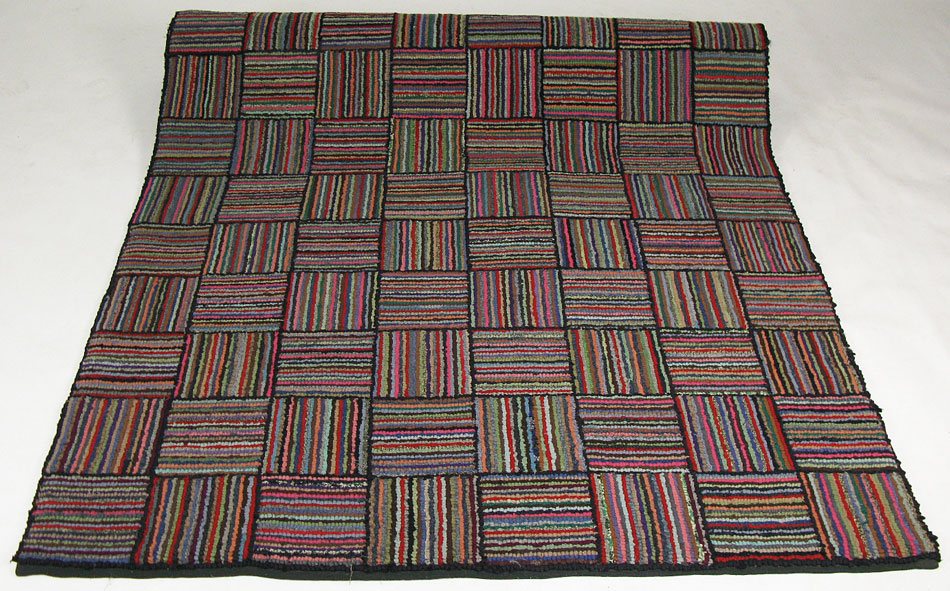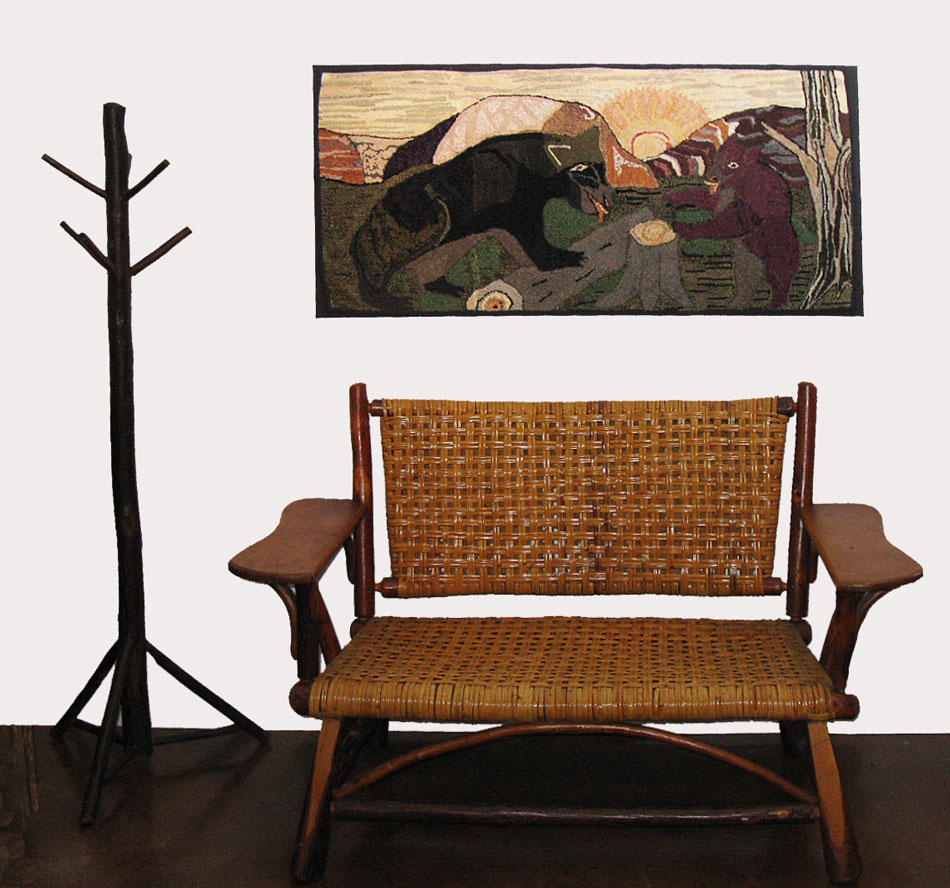Bears Hooked Rug
For as long has there has been a market for antique American folk art, hooked rugs have been a strong category within it. Many excellent examples are documented in the 1985 book American Hooked and Sewn Rugs: Folk Art Underfoot by Joel and Kate Kopp. Hooked rugs that were made for simple household comfort by women who were not formally trained as artists were nonetheless often imbued with artistic expression. Such rugs have always appealed to us, and we have bought and sold many over the years.
The types of hooked rugs we’ve owned fit within three general categories of design: floral, geometric, and figural - meaning that they depict objects such as animals, houses or landscapes. Each category can be further divided as originating from a pattern or from the hooker’s own design.
Floral hooked rug
Figural hooked rug - owls, flower and heron
The two bears rug (now sold) is an example of an original design figural hooked rug. It is made of wool fabric strips, measures 53" wide by 25" high, and has been mounted on a frame for hanging.
The scene shows two bears, an adult and a cub, exploring a fallen tree in the forefront of a hilly landscape at sunrise. Given how the bears seem to be intently focused on the tree stump, perhaps the creator imagined them raiding a bee hive within it. The larger bear’s honey-colored, lolling tongue reinforces this impression.
The creator of this circa 1940 rug used two approaches to address the challenge of giving the scene some three-dimensionality despite the limitations of the medium of wool and the technique of hooking. The first is through the use of color to convey how light falls on contours and illuminates a single color in different shades. This is accomplished for instance with the gray undersides and the multi-colored coats of the bears, the vertical stripes in the standing tree trunk, and the variety of patterned colors within the background hills.
The second approach is through varying the tightness of the hooking and the width and nap of the fabric. The two shades of green used in and around the bears for instance, have different textures, as does the loose grey wool in the tree stump, all of which causes different areas of the scene to recede or stand out.
We do not know where this rug originated, but suspect that it was made in Canada where there is a long tradition of creative rug hooking. Our regional attribution is based on this rug’s similarity to a collection of hooked rugs we are familiar with which have very similar subject matter, landscape depictions, and painterly design. Those rugs were all from the Lake Huron region of Ontario. This bears rug, if not made by the same hand as some of those rugs, likely has origins within that region’s design traditions.
While hooked rugs such as this are often called naïve or primitive in style, this one can also justifiably be deemed graphically sophisticated. The postures of the bears and the overall shading and tonality give it lots of lively movement. In capturing a scene from nature that could conceivably be viewed outside many a rustic abode, this rug is not only a great example of American folk art, but a fitting accent for rustic décor.























